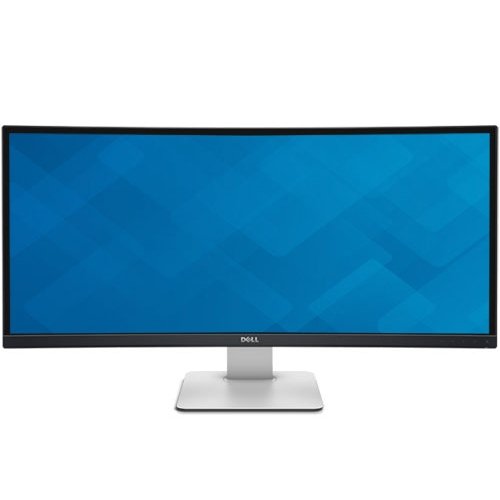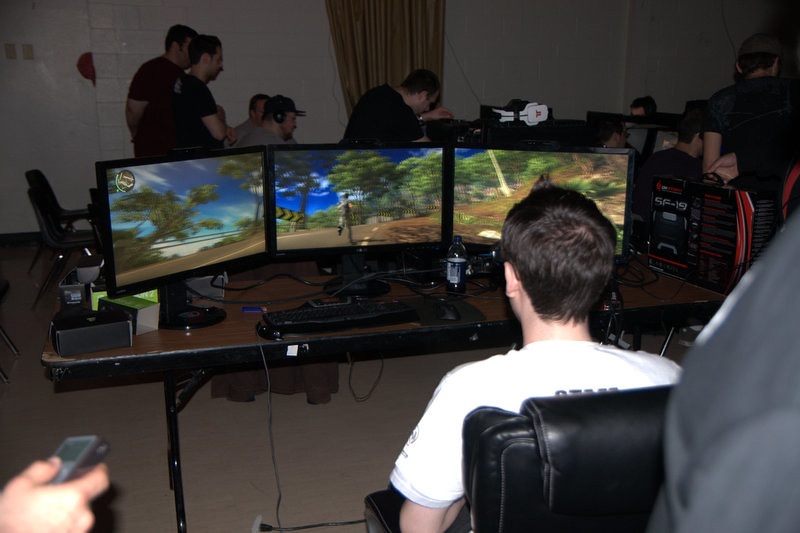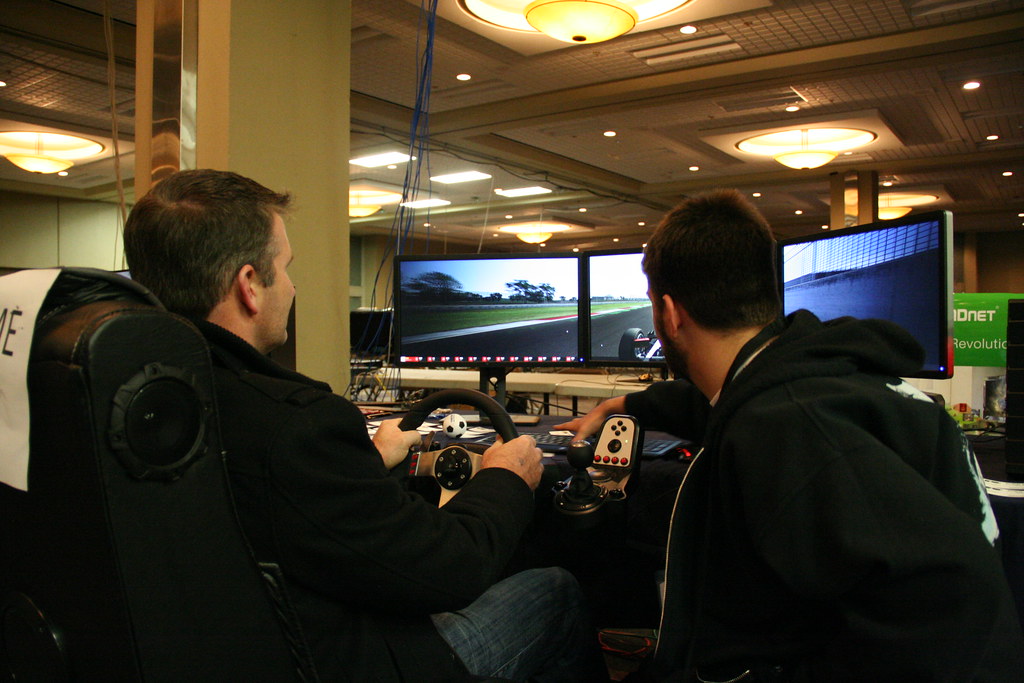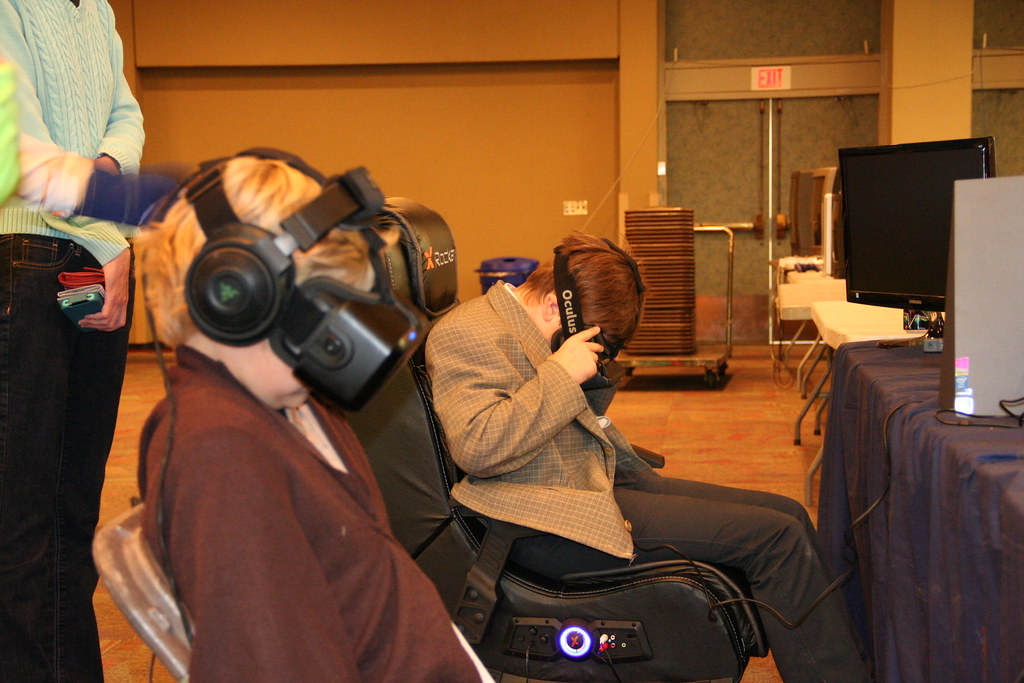For a long time, I’ve been a major advocate of multi-screen setups for your computer. I personally have a hard time using a system with only one screen. I’ve had two or more for so long that I’m not even sure how long it has been since my PC only had one.
Even at work (before I worked from home), I convinced every employer for the last ten years that having more than one screen will dramatically increase my productivity, which was true. Adding extra screens allows you to be far more productive when working with multiple windows at the same time. I don’t think this mode of PC use will be going away any time soon, but I am starting to feel like multi-monitor gaming’s days are numbered.
Gaming with three screens has been around for a while now, but it has always been a niche setup. AMD introduced the concept in September 2009 with the launch of the Eyefinity technology that was included with the HD 5000 series GPUs. For the first time ever, gamers could use one graphics card and drive up to three monitors in a video game.
The idea, while exciting, never really took off in the mainstream gaming community. Having three screens offers a massive increase to the available viewing area in a game, but over the years many genres haven’t bothered to support the concept. Racing games and flight games benefit greatly from the extra width, but first person shooters rarely support the rendering correctly, and the result is a strange warped image, or cropped top and bottom rather than wider view.
Over the years, hardware support has gotten much better. AMD’s cards are now generally powerful enough to actually pull off playing games with three screens enabled. The extra pixels that need to be rendered are a huge tax on the system, which leaves it open only for the big spenders that have the pockets to buy the best GPUs.
Nvidia was late to the party with three-screen gaming. SLI was adapted to support multi-screen setups, but the first two generations required two GPUs, as in those days’ cards from the green team would only support two displays per GPU. Though, the current crop of Nvidia GPUs don’t have that issue anymore. These days you can drive up to four displays at once, with up to three of them displaying gameplay.
Triple screen gaming has gotten much more affordable over the years as well. When Eyefinity first game to market, a 24” 1080p display would set you back many hundreds of dollars. Having three of them for gaming, plus the graphics hardware to handle the workload would set you back a pretty penny. These days you can get three 1080p screens for a few hundred dollars, and by now you probably have one or two on your desk.
Driver configuration has gotten better too, but it’s still not perfect. I haven’t used an Eyefinity setup for a while, but Nvidia has made great improvements to the NV Surround configuration utility. The old way was a nuisance, it was clunky and difficult to work with.
Using three screens really was an enthusiast option in the early days. It’s gotten much better, but too little too late in my opinion. You may be wondering why I would say that right after describing the improvements that have been made with triple-screen gaming over the last 7 years. Well, my friend, that is simple. 4K and Ultrawide displays are killing that market. Even VR will bite into the same customer base.
Even with the progress that has made multi-screen setups easier to attain and configure, most people simply don’t want to deal with that many screens on their desk. When the idea came about, 1080p was a high resolution monitor and 1440p was a stupendous luxury item. Things have changed now, though.
A 1080p screen is now nothing special, 1440p screen were getting affordable, but 4K has really started to drop in price lately. I don’t think 1440p will ever have the same traction that 1080p ever did, but I also see a different trend when more screen real estate is needed.
People have been looking to the new Ultrawide form factor rather than multiple screens. A single ultrawide screen offers great productivity options, far less configuration hassle, fewer cables to deal with, and no bezels to contend with.
The highest resolution Ultrawide displays come in at an astounding 3840×1440, which again demands serious graphics horsepower to run, but you can also get 2560×1080 Ultrawide displays at a fraction of the cost of a 4K-Ultrawide display.
These monitors are great for the wider field of view in gaming, but it isn’t a great solution for racing fans to replace a setup with three screens. These people will likely turn to VR in the coming year or two though. Virtual reality head mounted displays offer far more immersion and realism, which is what racers using three screens are going for, so this will be the next logical progression for them.
I would know. I’m one of them.
I’ve been rocking three screens on my system for years (I’m actually up to four right now), but I can tell the writing is on the wall. I suspect that with the VR headsets coming my way this year, I will find myself trading the three 1080p screens for a single Ultrawide and an Oculus Rift or HTC Vive as my primary configuration.
Kevin Carbotte is Senior Editor, Hardware for AllYourBaseOnline.com. He knows a little about a lot, and a lot about a little. The opinions in his columns are his and his alone, but you are free to have them.






